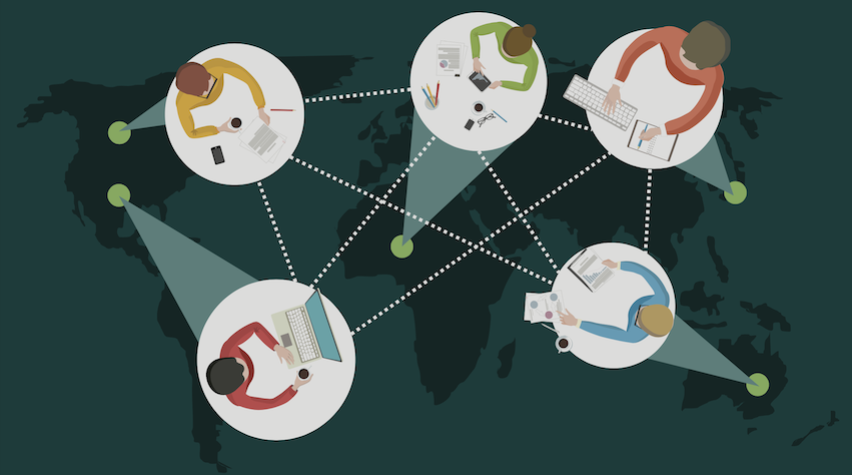
The COVID-19 pandemic has had widespread social, economic, and political impacts. The urgency to limit normal day-to-day contact with others resulted in many establishments needing to shut down or seek alternative methods of operation. Some companies required weeks to switch to a work-from-home platform and make significant changes to business protocols. However, academia is one sector that had to make adjustments on short and immediate notice, especially for fields such as chemical engineering and other science departments that could not be entirely remote.
As a commuter who graduated with my BS in chemical engineering in 2022 from the Univ. of California, Los Angeles (UCLA), I had the unique opportunity to experience college before, during, and after the onset of the pandemic.
Pre-COVID
Before the pandemic, virtually all core chemical engineering classes were conducted in-person. Depending on the professor’s teaching methods, students would enter a lecture hall and be greeted with either slides displayed on a screen, writing on the board, or just an entirely oral lecture given by the professor with minimal to no writing. Students had to take notes during the class period as, often, the professor did not post any notes or slides on their course website.
Assignments for the classes had to be completed either by hand or typed, with a physical copy submitted to the professor or teaching assistants (TAs) during class. After the assignment was graded, there was also a chance that only the grade would be distributed and the actual submitted assignment would not be returned to the student. If a student had a question, it would be difficult to get in touch with the professor through email and they would have to visit either the TAs or the professor during office hours.
The initial switch
In March 2020, the transition to remote learning was an immediate yet frantic one as students were told to pack up and move out of the dorms as soon as possible. At UCLA, the pandemic shutdowns occurred during the exam season between academic terms. Professors had to adjust their exams to be conducted online. These exams were proctored through Zoom with our cameras and microphones on — which I found to be very stress-inducing initially — and students had access to the exam document through the course website and were asked to write down their answers on a sheet of paper.
Questions that required work to be done on a diagram were uploaded the day before without the prompt so that the student could print it out for the exam. At the end, students would notify the proctors that they had finished and were then allowed to take out their phones to take pictures of their answers to submit.
Getting the hang of it
When lectures took place online, I noticed that each professor in my department had different teaching methods. Some professors would post their slides beforehand so that students could annotate them throughout the lecture, which was conducted entirely on Zoom. Other instructors, through the use of a device such as an iPad, screenshared and wrote their lecture notes down during class, and would then post the notes afterwards. Most lectures were recorded, as there were international students who could not attend at the scheduled time. Assignments were to be submitted online at a given deadline of either midnight or the end of class, allowing students to keep a copy of their assignment and instantly see their grade or annotations to their assignments as soon as the professor released them.
Exams were still mostly proctored over Zoom (and international students had a separate exam time scheduled). Other professors opted to give students a time window to complete their exam instead of proctoring, but instead made the questions much more difficult to discourage any cheating or collaboration.
The most impacted classes were those that involved labs. Since no hands-on experiments could be conducted, students would receive a video of the experiment being conducted along with data collected. The assignment would then be to analyze the data and write a lab report or give a presentation on Zoom.
Back to class
Remote learning had given students an abundance of new resources. However, with UCLA’s transition back to in-person classes in September 2021, many students found it disruptive after being remote for over a year. Nonetheless, aspects from remote learning carried over as professors began posting notes online more often than before the pandemic. Some even went the extra mile to post recorded lecture videos from when instruction was online as additional reference materials.
These recorded videos helped us to either prepare ahead of the lecture, or use it as a content refresher later in the term. Office hours were now conducted both in-person and online at different times, which was more convenient for students — especially for those who did not live on or near campus, or commuters like me. The instructors were open to scheduling separate one-on-one calls with students to explain the material further. Assignment collection remained online for most courses as it not only was convenient for student submission, but also for graders as they could access the material from anywhere. These small conveniences were a result of the pandemic, but may be here to stay as they benefit academia and make it a more inclusive space.
This article originally appeared in the Emerging Voices column of the November 2022 issue of CEP. Members have access online to complete issues, including a vast, searchable archive of back-issues found at aiche.org/cep.

